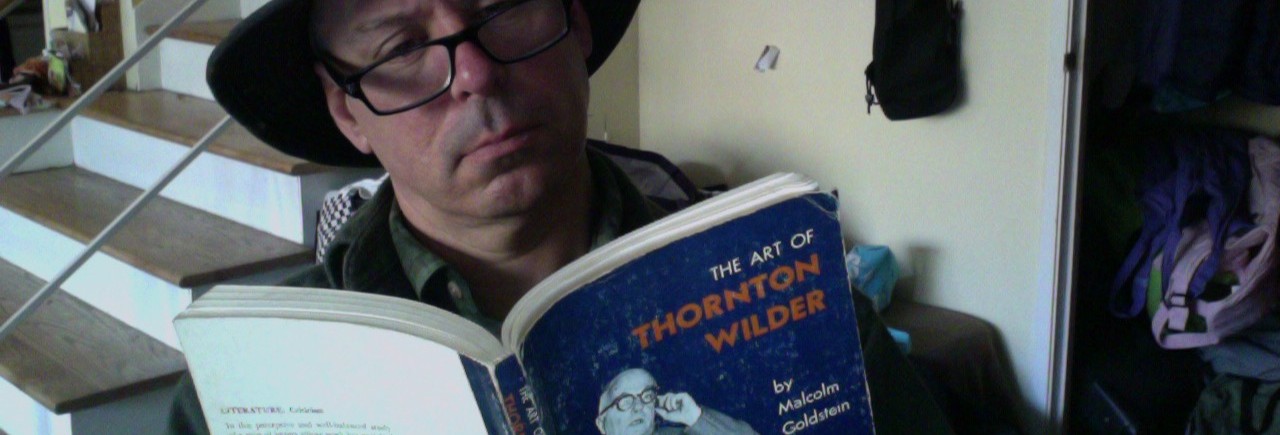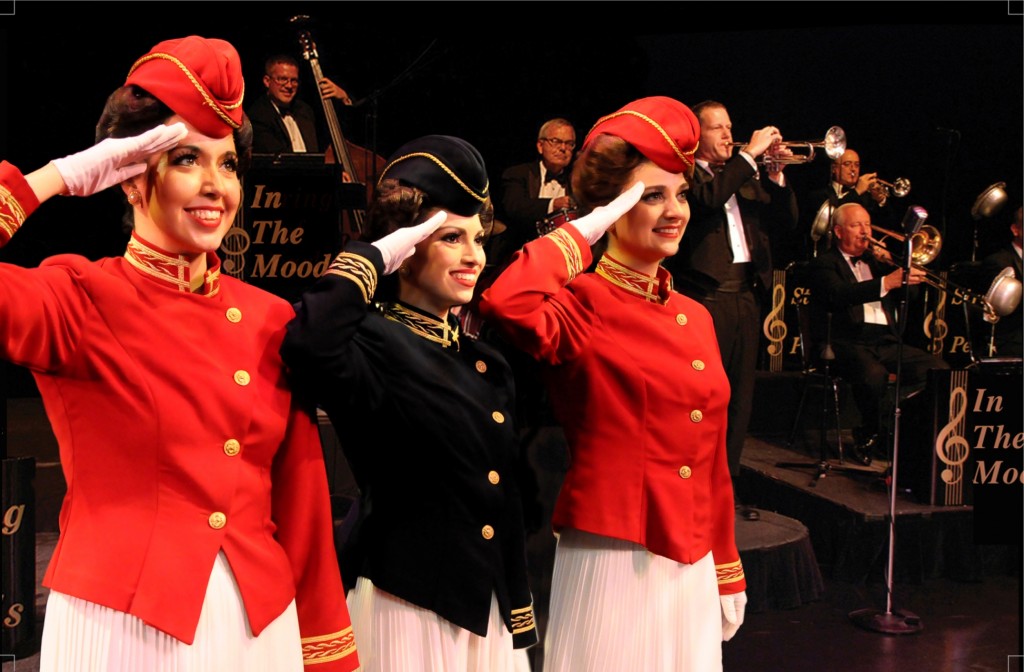I previewed this show for CTNow, here. It was at the Shubert last night, April 5, and has two other Connecticut stops this month: for seven performances April 16-20 at the Ridgefield Playhouse and two shows at the Bushnell in Hartford on April 22.
In the Mood’s been around for 20 years, doing songs that’ve been around for 70 or more. It’s a straightforward song-and-dance revue with minimal fuss and no extra baggage. The singers are also the dancers; they have body mics so they don’t have to plant themselves in front of a mic stand all the time, and even get to circle around behind the band sometimes. The band is 13 pieces, with saxophonists doubling as clarinetists. For a little extra showmanship, the band marches up the aisles of the theater at the start of the show, then does an onstage formation for “Over There,” during the WWII-themed second act.
In the Mood is largely a tribute to the late Vic Schoen, the man whose clever arrangements the show has procured for many of its big numbers. Schoen arranged for the Andrews Sisters, and it’s a treat to hear their songs harmonized as they were meant to be. The show’s live arranger is David Bandman, who played trombone for the U.S. Air Force Band and is apparently responsible for how seamlessly the songs segue from one to another. Bud Forrest, who conceived and produces the revue, also serves onstage as pianist and Music Director.
There are a number of instrumental medleys, but one of the real pleasures of the show is how it makes the most of a good lyric. Many of the love songs are staged as playlets, and the comic number Say That We’re Sweethearts Again (popularized in 1944 by Virginia O’Brien, but done here by a male vocalist) demonstrates that sick humor existed in pop culture well before the 1960s.
An unnecessary dig at “modern music” in the between-song patter, the old cliché about how “you can’t understand the words, and don’t touch when dancing” is rendered nonsensical when, a couple of songs later, Lionel Hampton’s proto-rock & roll rave-up “Hey Ba-Ba-Re-Bop” is performed. And seriously, how great is there a leap from “Boogie Woogie Bugle Boy” to Chuck Berry’s “Johnny B. Goode”?
In the Mood’s pretty good at sustaining a nostalgic mood, however. I wish they hadn’t gone to “La Vie en Rose”—nobody sings like Edith Piaf, and any comparison is more pronounced in a wartime cabaret setting. But the joint Andrews Sisters/Mills Brothers tribute is a model of how to honor distinctive musical voices without resorting to outright impersonation.
This is not a faceless tribute. There’s a program with the name and photo of everyone onstage, which is better than a lot of touring revue casts get. The band soloists get acknowledged by name throughout the show, included a long full-band introduction in the first act.
The audience even gets special recognition. Realizing who must be in attendance, cast member and designated emcee Joshua David Cavanaugh (who, in his short slicked-back hair looks a lot like Cole Porter) invites veterans from the various armed forces to stand—first the World War II vets (of whom there were quite a few at Saturday night’s performance, remarkable considering that these men would have to be in their late 80s at least), then more recent ones.
Part of me wishes that such delirious, uplifting, communal music wasn’t so deeply associated with global conflagration. I appreciate how In the Mood is able to make the entire first half of the show war-free, concentrating on the earlier days of swing. There’s also a clubbish, microcosmic community feel to the show, due particularly to Linda Tomlin’s costume designs, that keeps the horrors of the outside world at bay. When not donning the occasional trenchcoats or other sketch-friendly costumes, the male singer/dancers wear double-breasted tuxedos, the women a succession of largely black outfits with bright red or pink elements. The band’s in blue jacket, red striped bowties and white pants.
There’s considerably more merriment than militariment. Several of the soldierly songs, such as Frank Loesser’s “What Do You Do in the Infantry?,” are light-hearted and self-deprecating, while others (“This is Worth Fighting For,” “The White Cliffs of Dover”) are sweet and sentimental. The whole shindig ends by bringing it all back home to a bygone community feel: “On the Sunny Side of the Street.”
I was impressed by the consistency and by the clever band arrangements. I brought my 11-year-old daughter, who’s previously seen Rat Pack and Ella Fitzgerald tribute shows and has a taste for old jazz. She added several new numbers to her personal hit parade. We spotted only one other child in the audience, no teenagers and only a very few folks who might have been in their 20s or 30s. This was very much a nostalgia exercise for the elderly. As such, In the Mood could deliver a lot less variety than it does and get the same response from its target audience. This show, a reliable revue that runs as smoothly as a WWII munitions factory assembly line, deserves a broader following. It swings in many directions.
In the Mood: A 1940s Musical Revue
Conceived and produced by Bud Forrest. Stage Director/Choreographer: Alex Sanchez. Arrangers: Vic Schoen, David Bandman. Costumes: Linda Tomlin. Singers/Dancers: Elizabeth Baumgartner, Joshua David Cavanaugh, Dan Faber, Stephanie Gaertner, Laura LaCara, Nick Pankuch. Orchestra members: Greg Armstrong (tenor sax), Brad Bobcik (trombone), Chris Dunn (trombone), Tom Dupin (drums), Bud Forrest (piano), Andrew Golden (trumpet), Andy Hainz (bass), Jim Hayward (lead alto sax), Joe Jenkins (baritone sax), Brandon Moodie (bass trombone), Dan Smith (trumpet), Gene Thorne (2nd alto sax), Steve Walters (trumpet).

